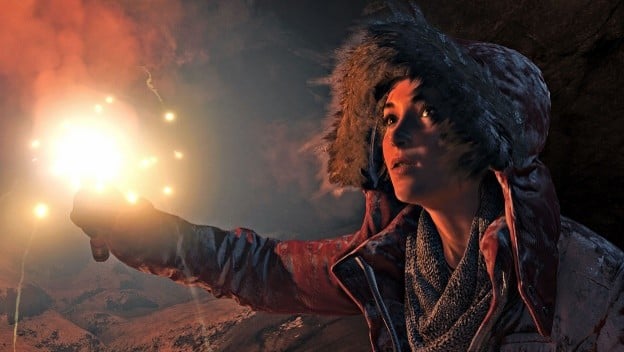Lara Croft, the central character of the long running Tomb Raider franchise, has been a gaming icon since the 90s. She was a rare female protagonist, icy and strong. She was also a bit of a male fantasy, and her popularity in gaming spawned a couple of movies. Throughout her many appearances, she remained, primarily, a person who explored tombs. There was little rhyme or reason given as to how she became the unrealistic person the games depicted. That is, until Crystal Dynamics and their head writer, Rhianna Pratchett, rebooted the series with the 2013 release of Tomb Raider . All of a sudden, a game series that once saw story as ancillary established its narrative as one of its main draws.
This version of Tomb Raider totally redefined who Lara is as a character. Aspects of Lara that were generally accepted were dialed back. She was no longer effortlessly brave. She was no longer a stone cold killer. Her infamous chest region also saw a redesign. The game is effectively a tale of becoming that establishes the personality we will see in future games. It’s a rare origin story that manages to feel fresh and exciting.
In making Lara more believable and giving her room to grow and develop throughout the game, the developers created an avatar that the gamer wants to see survive; we don’t want to see bad things happen to her, and there are plenty of bad things that can happen in the game’s harsh environment. As the player navigates the character through Tomb Raider ‘s campaign, they learn that Lara is a deeply empathetic character that, still, will do what she must to survive. She seems to dip in and out of a survival mode that often requires her to take the life of a fellow human. This need to kill, combined with her life being in peril, surely affects her psyche. As a result, the game necessitates a sequel; gamers want to check back in with Lara to see how she’s managing after the events of the first game. Enter Rise of the Tomb Raider .

The question, then, is why is Lara back in danger? The short answer: she is driven by the mysteries of the first game and a curiosity that needs to be slaked. She is, no longer, the type to sit idly by and her desire to treasure hunt and unearth these ancient secrets trumps her fears. She seems to be on her way to an obsession. The believable girl from the first game is, effectively, becoming the tomb raider.
This transformation is compelling enough to justify the games. And it’s more than just a bonus that the gameplay is immensely satisfying . That these two elements of the game match and blend themes so well is key to Tomb Raider’s success. Lara Croft plays like a survivor more than a badass. It is rare that design is handled this well. In recent memory, Arkham Knight is one of the few other games to handle itself so gracefully.
Video game stories need to take inspiration from games like Tomb Raider. The characters and story can dramatically enhance the gameplay, and can be the defining features of the game when proper care is given. When they are more than merely tacked on at the end, a well-written narrative is what can pull a gamer through sequels. Crystal Dynamics understands this; I need to play Rise of the Tomb Raider so I can see how the writers developer an icon even further.
